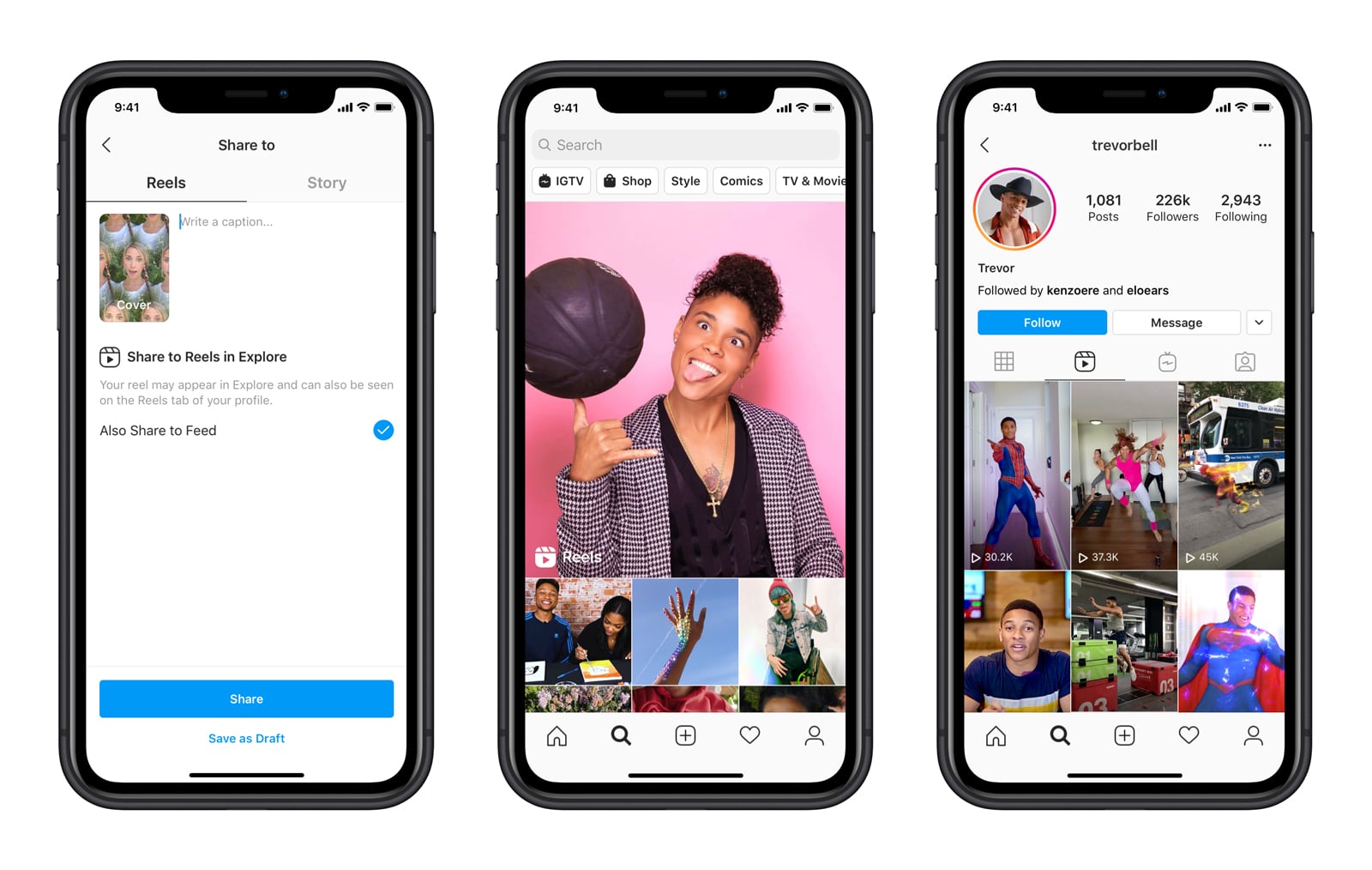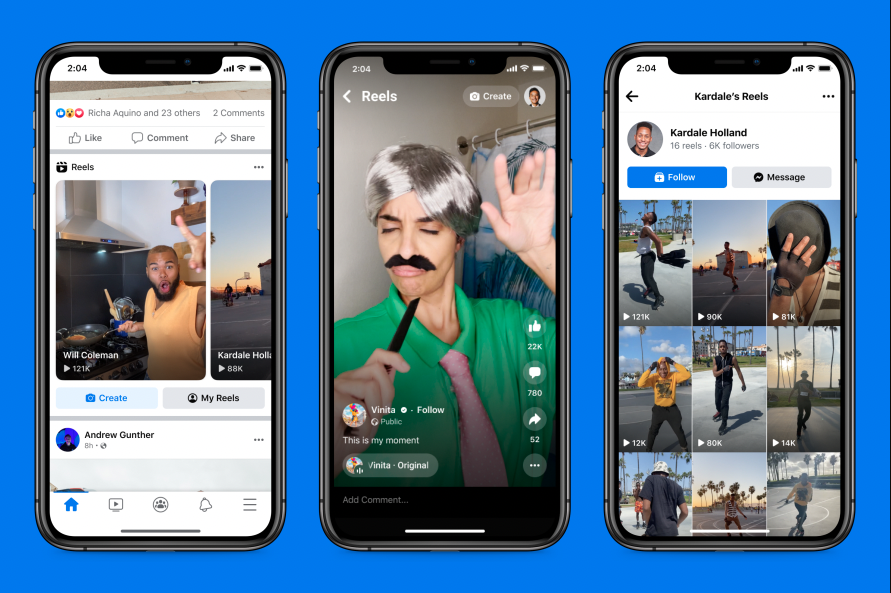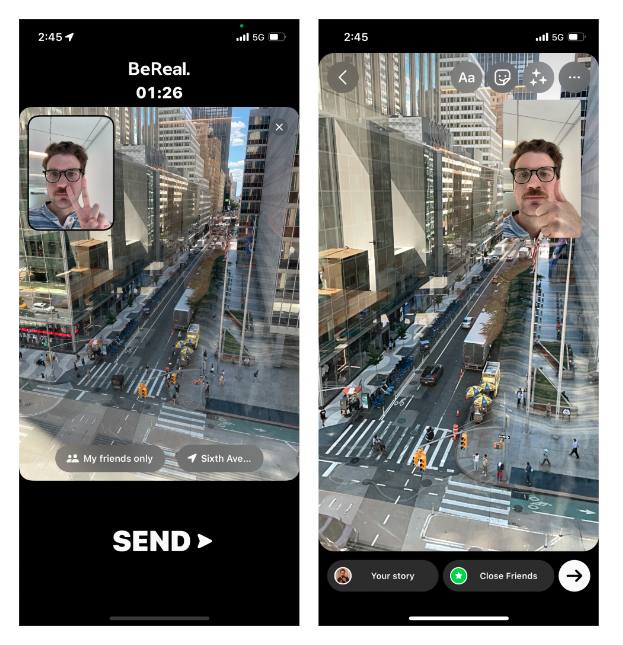The say that capitalism breeds innovation, but as social media popularity persists into the 2020’s, nothing gets the free market moving like the TikTok-ification of Facebook or the Snapchat-ification of Instagram. In our present day, social media companies appear to be less interested in innovating, and more interested in Frankenstein-ing. Over the last decade, some of the most popular social media apps have blatantly ripped off features from some of the other most popular social media apps, in a tech version of Capture the Flag where the only losers are the users who are forced to persist through this cat-and-mouse game.
It’s important to note that Facebook (now Meta) purchased Instagram in 2012, but for the sake of exploring how features from one platform have dispersed into another, Instagram and Facebook will be treated as separate entities.
Instagram steals Vines
The beginning of the end was nine years ago. Vine brought short-form video content to smartphones in January 2013, allowing users to create looping 6.5 second videos with ease and share them with their friends. Vine’s novelty made the app a staple in Millennial culture: Pre-existing platforms like Twitter, Facebook, and Instagram didn’t have an easy way to create and post video content just yet.
A mere six months later though, Instagram did the unthinkable — it stole Vines from Vine. Instagram rolled out its own video player in June 2013, but with some notable differences, like a 15-second max recording time as opposed to Vine’s 6.5 seconds, and an unfortunate lack of looping. Vine eventually announced its shutdown in October 2016, but not before it had been massacred by a rival.
Instagram steals Snapchat stories

It wasn’t enough to strike once, but Instagram was hellbent on making it clear that it was on a warpath to secure its place as a mostly visual medium in a social media scene populated by text-based giants like Facebook and Twitter. Instagram’s ability to allow users to publish photos (and now videos, see last slide) in their feed was the main appeal of the app, until 2016.
In a bid to engage users further, Instagram ripped a page out of Snapchat’s book. Snapchat was less of an Instagram competitor and more of a text message competitor, as Snapchat’s appeal to a young demographic was disappearing photo messages complete with text and drawing tools, but Instagram saw a Snapchat feature that would completely change the game: Stories. Snapchat stories allow users to upload a photo to their “story” that will disappear after 24 hours, and Instagram announced their version of it in August 2016.
Facebook steals Instagram stories

Stories were quick to proliferate through the big social media platform, and Facebook was quick to claim them after Instagram’s successful implementation of the feature. Facebook launched Facebook Stories in March 2017. After the launch of Facebook Stories, the company’s social media properties appeared to take some time off of poaching other platform features, at least for a while.
Instagram steals from TikTok

Picture this: It’s March 2020 and the covid-19 pandemic is raging outside your door. With nothing else to do, what do you turn to? TikTok of course. TikTok, which was born out of lip-syncing app Musical.ly, saw a massive surge in users when stay-at-home orders forced us to…well…stay at home during the peak of the covid-19 pandemic.
In a feverish bid to breathe life into what was once Goliath to Vine and Snapchat’s David, Instagram developed and released their own “TikTok” feature within the app itself, dubbed Reels. Instagram Reels debuted in August 2020, and TikTok CEO Kevin Mayer said in a blog, as quoted by Variety: “At TikTok we welcome competition… To those who wish to launch competitive products, we say bring it on.”
Twitter steals Snapchat/Instagram/Facebook Stories
That thing you didn’t Tweet but wanted to but didn’t but got so close but then were like nah.
We have a place for that now—Fleets!
Rolling out to everyone starting today. pic.twitter.com/auQAHXZMfH
— Twitter (@Twitter) November 17, 2020
Do you remember Fleets? Of course you don’t. Twitter was slow to the draw in experimenting with a stories feature, but better late than never. Twitter announced Fleets, its version of Stories, in November 2020. But alas, Fleets offered nothing that couldn’t be found in the likes of Snapchat, Instagram, or even Facebook, and Fleets was killed unceremoniously less than a year later. I’d like to take this opportunity to celebrate us commoners successfully bullying a corporate entity into submission.
Facebook steals from TikTok

“How do you do fellow kids?” said Facebook when they unveiled their TikTok clone Reels. “Wait isn’t that the exact same name as Instagram’s version of TikTok?” I hear you asking. You’re damn right it is.
Facebook Reels launched in September 2021 as a last-ditched defibrillator hit to reinvigorate a platform that the younger generation began to flee from.
YouTube steals from TikTok
YouTube is a new name in this slideshow, and that’s because YouTube isn’t really a “social media” website, no matter how hard it tries to market itself as such. But when a video platform as revolutionary as TikTok came along, YouTube wanted its piece of the pie and launched YouTube Shorts in the U.S. in March 2021.
YouTube Shorts actually makes a little bit of sense since YouTube has always been a pioneer in digital video sharing. It’s just a shame that the interface looks exactly like TikTok. No matter, because YouTube Shorts apparently rakes in a big 1.5 billion views per month, besting TikTok .
Twitter steals from Substack
✨ Introducing: Notes ✨
We’re testing a way to write longer on Twitter. pic.twitter.com/SnrS4Q6toX
— Twitter Write (@TwitterWrite) June 22, 2022
Twitter’s gimmick was always the length of its Tweets. What began as 140 characters was then deemed not enough, and under the pressure of its users, the company finally caved to raise the character limit to 280. But 280 characters may no longer be the hard limit, as Twitter announced Notes in June.
Twitter Notes is an effort from the company to test out long-form written content. Users will basically be able to post blogs with the ability to embed images and Tweets and format text with headings and links. I recognise that accusing Twitter of “stealing” the feature from Substack — a popular self-publishing platform for newsletters — might be a little bit of a stretch, but it’s noteworthy that the social media platform is peddling a blogging feature when it’s entire genesis was short-form text content.
Twitter steals from Slack
New Twitter update lets you add a topic to your status. pic.twitter.com/gs7tpBRuCb
— TJ 🦆 (@tifotter) July 28, 2022
Gizmodo is a part of a “Slack and Gmail company” as opposed to a “Microsoft Teams and Outlook company,” like my previous job. In shifting from Teams to Slack, I have become obsessed with Slack statuses, where users can signal what they’re up to using an emoji and a brief line of text. It’s a pretty nifty feature, and Twitter is testing out their own version of it.
Status updates on Twitter will appear as an emoji and a brief line of text (see above) added to a Tweet from a pre-determined list. Examples range from potentially useful like “⚠️Spoiler alert,” to more utilitarian like “✈️Travelling”, to incredibly cheugy like “🍄Unpopular opinion.” On a platform where you can literally say what’s on your mind, why would you need a status to do it for you?
TikTok retaliates
TikTok Stories
what the… 😳 pic.twitter.com/PIUpKMhj0k
— Matt Navarra (@MattNavarra) August 4, 2021
TikTok was not about to stand idly by and allow Facebook and Instagram to get away with stealing the very DNA that makes TikTok, TikTok. According to Nylon, TikTok began rolling out its Stories feature in March 2022 but was first noticed by Matt Navarra and The Verge back in August 2021. TikTok likely didn’t need this feature as its not exactly struggling to keep people using the app, but it could be looked at as a nice middle finger to Instagram and Facebook.
TikTok stories are located at the top of the “Inbox” tab. Once you open a story, the interface looks exactly like a TikTok (notably you scroll vertically on TikTok stories as opposed to laterally on Instagram/Snapchat/Facebook stories), but the rule of disappearing after 24 hours remains the same.
Instagram steals from BeReal

BeReal is a social media app that has, to put it lightly, exploded in the past few weeks. The app’s appeal comes from its central premise that its users are only able to post once a day at a given time (you can post late), but are able to leave comments and reactions afterward. Once the next day’s notification to post is sent, your previous BeReal disappears. There’s no filters, there’s no visible follower count, the interface is super sleek and minimal, and BeReal uses both your front and back camera to create one image.
As Instagram continues to do everything it can to prevent itself from suffering the same fate as Facebook, the service is rolling out its own version of BeReal called “Dual.” Dual is already in my Instagram app under the Story feature, and it appears that Instagram’s main prey was the use of both cameras (hence the name “Dual”) and not the timed posts, because how the hell would that even work on Instagram?
